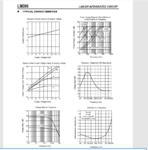000SHREDDER000
Full Member level 1
Hi there, I am back:-?, a few days ago I found a circuit in the Internet, circuit maker claimed it can receive many frequency at same time, yesterday I build it but it doesn't work.
also it doesn't work on simulator above 1Mhz, can someone tell me The truth about it?
can I change R7 and R4 to 1M, R6 to 10k, C6 to 100pf for more output power?

also it doesn't work on simulator above 1Mhz, can someone tell me The truth about it?
can I change R7 and R4 to 1M, R6 to 10k, C6 to 100pf for more output power?




